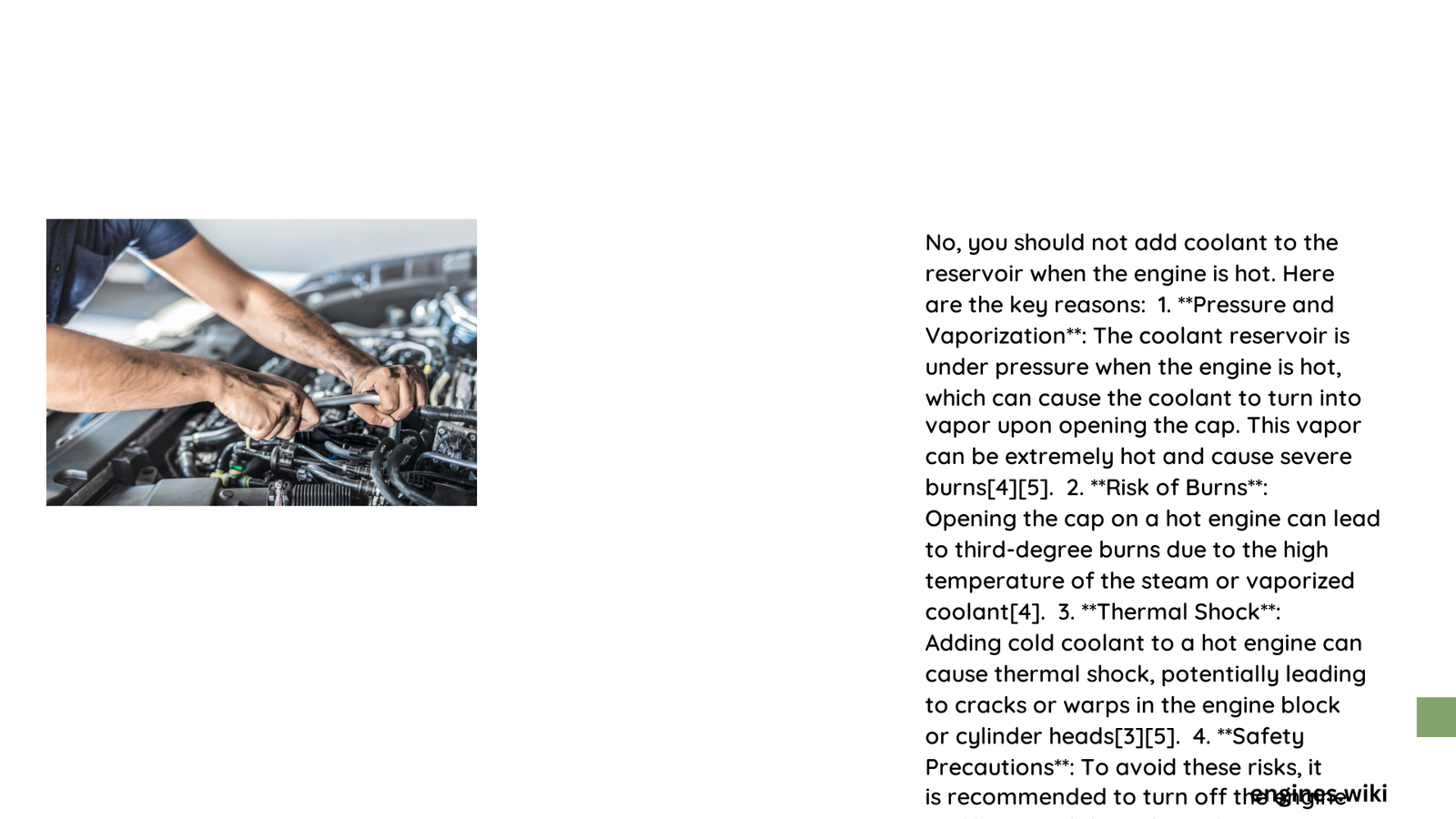Adding coolant to a hot engine is a delicate procedure that requires careful attention and understanding of potential risks. Vehicle owners often face the dilemma of managing coolant levels during unexpected situations, but rushing this process can lead to catastrophic engine damage, expensive repairs, and potential personal injury. This comprehensive guide will walk you through the critical considerations, safety precautions, and recommended steps for handling coolant in a hot engine environment.
What Happens When You Add Coolant to a Hot Engine?
When cold coolant meets a scorching engine block, several dangerous scenarios can unfold:
Thermal Shock Risks
- Rapid Metal Contraction: Hot engine components can crack or warp
- Potential Cylinder Head Damage: Sudden temperature changes compromise structural integrity
- Cooling System Pressure Buildup: Unexpected expansion and stress on system components
Temperature Interaction Mechanics
| Engine Temperature | Risk Level | Recommended Action |
|---|---|---|
| Extremely Hot (>220°F) | High Risk | Wait 20-30 minutes |
| Warm (180-200°F) | Moderate Risk | Proceed with caution |
| Cool (<160°F) | Low Risk | Safe to add coolant |
Why Wait Before Adding Coolant?

Waiting allows several critical processes to occur:
- Pressure Reduction: Cooling system depressurizes naturally
- Temperature Normalization: Engine metal contracts safely
- Safe Handling: Minimizes burn risks from hot steam/liquid
Safe Coolant Addition Procedure
Preparation Steps
- Turn Off Engine: Complete engine shutdown
- Wait 15-20 Minutes: Allow temperature stabilization
- Use Protective Gear: Wear heat-resistant gloves
- Check Coolant Type: Ensure correct manufacturer-recommended mixture
Careful Opening Technique
- Cover Radiator Cap with thick cloth
- Slowly Rotate Cap: Release pressure gradually
- Listen for Hissing: Indicates pressure release
- Add Coolant Incrementally: Prevent sudden temperature shock
Common Mistakes to Avoid
- Never Remove Radiator Cap Quickly
- Avoid Adding Cold Liquid Rapidly
- Do Not Overfill Reservoir
- Skip Adding Coolant If Unsure
Professional Recommendations
Automotive experts unanimously agree: patience is key when managing engine coolant. The few minutes spent waiting can save hundreds or thousands in potential repair costs.
Expert Tip
“A moment of caution prevents a lifetime of engine repair regret.” – Master Mechanic’s Wisdom
When to Seek Professional Help
Consider professional intervention if:
– Engine overheats frequently
– Coolant levels drop rapidly
– Visible steam or unusual noises occur
– Uncertain about proper coolant procedure
Technical Insights
Coolant’s primary function extends beyond temperature regulation. It:
– Prevents corrosion
– Lubricates water pump
– Protects against freezing
– Maintains optimal thermal exchange
Final Safety Checklist
- ✓ Engine completely off
- ✓ Waited 15-20 minutes
- ✓ Protective gear worn
- ✓ Correct coolant mixture
- ✓ Slow, careful addition
Remember: Your vehicle’s cooling system is complex. When in doubt, consult a professional mechanic.
